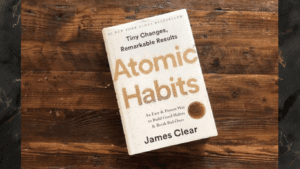Introduction to Bunkering
Bunkering is a crucial process in the maritime industry, involving the supply of fuel for ships. This procedure ensures vessels have the necessary fuel to complete their voyages. The term “bunkering” originates from the word “bunker,” which historically referred to the storage compartments on ships where coal used as fuel was kept.
Today, it primarily deals with various marine fuels such as heavy fuel oil, marine diesel, and liquefied natural gas (LNG). This guide will delve into the intricacies of it, including the types of fuels used, methods of bunkering, associated regulations, and future trends shaping the industry.
What is Bunkering?
Bunkering refers to the process of supplying ships with fuel for their engines. The fuel is stored in special compartments known as bunkers. It is an essential part of maritime operations, as fuel accounts for a significant portion of a ship’s operating expenses.
The Evolution of Bunkering
The history of bunkering dates back to the time of steamships, which were powered by coal. Ships had coal bunkers where fuel was stored and fed into the ship’s boilers. With the advent of diesel engines, coal was replaced by marine diesel oil, heavy fuel oil, and more recently, environmentally friendly alternatives like LNG and biofuels.
Today, it is a sophisticated operation involving a wide range of stakeholders, including fuel suppliers, shipowners, port authorities, and regulatory bodies.
Types of Marine Fuels Used in Bunkering
Marine fuels are categorized based on their composition and quality. The choice of fuel depends on factors such as engine specifications, environmental regulations, and cost considerations. Here are the most common types of fuels used in bunkering:
1. Heavy Fuel Oil (HFO)
- Description: Also known as bunker fuel, HFO is a residual fuel derived from crude oil distillation. It is thick, viscous, and relatively inexpensive.
- Usage: Predominantly used by large cargo ships and tankers.
- Challenges: Emits high levels of sulfur oxides (SOx) and other pollutants, leading to increased regulatory scrutiny.
2. Marine Diesel Oil (MDO)
- Description: A refined, lighter fuel than HFO, MDO is similar to traditional diesel used in cars.
- Usage: Commonly used in smaller vessels and during maneuvers when lower-emission fuels are required.
- Advantages: Produces fewer emissions than HFO, making it more environmentally friendly.
3. Liquefied Natural Gas (LNG)
- Description: A clean-burning, gaseous fuel that has gained popularity due to its lower emission profile.
- Usage: Increasingly used in new ship builds as the industry moves towards greener practices.
- Benefits: Emits significantly less sulfur and nitrogen oxides (NOx) than traditional fuels, helping meet stringent emission standards.
4. Low Sulfur Fuel Oil (LSFO)
- Description: A variant of HFO with reduced sulfur content to comply with international regulations.
- Usage: Widely used to meet the requirements of Emission Control Areas (ECAs).
- Compliance: Helps ships adhere to the International Maritime Organization’s (IMO) sulfur cap regulations.
5. Biofuels and Alternative Fuels
- Description: Renewable fuel sources such as biodiesel, synthetic diesel, and hydrogen are being explored to reduce the carbon footprint.
- Usage: Mostly in experimental stages but promising for the future of sustainable bunkering.
- Environmental Impact: Significant potential to cut greenhouse gas emissions.
Bunkering Methods: How is Bunkering Performed?
It can be done using different methods, depending on the type of fuel, location, and ship requirements. The three primary bunkering methods are:
1. Ship-to-Ship (STS) Bunkering
- Description: Involves the transfer of fuel from one vessel (the bunker barge) to another (the receiving ship). It is the most common method, particularly in busy ports.
- Advantages: Convenient for ships that cannot dock or prefer to stay anchored while fueling.
- Challenges: Safety concerns such as spillage and fire hazards require strict safety protocols.
2. Truck-to-Ship Bunkering
- Description: Fuel is supplied to the ship via tanker trucks. Suitable for smaller vessels or in ports where bunker barges are not available.
- Advantages: Flexible and convenient in ports with limited fueling infrastructure.
- Limitations: Limited capacity compared to other methods, making it unsuitable for large vessels.
3. Pipeline Bunkering
- Description: Fuel is delivered through pipelines directly from onshore storage facilities to the ship.
- Usage: Common in ports with dedicated bunkering infrastructure, especially for LNG.
- Benefits: Reduces the risk of spills and contamination since fuel is directly transferred through closed systems.
Bunkering Procedure Overview
- Pre-Bunkering Preparation: Ensuring all necessary documents, permits, and safety checks are completed.
- Communication and Coordination: Effective communication between the bunker supplier, ship’s crew, and port authorities.
- Fuel Transfer: The actual bunkering process, with continuous monitoring to prevent overfilling or leaks.
- Post-Bunkering Procedures: Disconnecting equipment, checking for leaks, and documenting the amount of fuel supplied.
Regulations Governing Bunkering
It is subject to various international and regional regulations aimed at reducing environmental impacts and ensuring safety. Key regulations include:
1. International Maritime Organization (IMO) Regulations
- IMO 2020 Sulfur Cap: Limits the sulfur content in marine fuels to 0.5% globally, with stricter limits in Emission Control Areas (0.1%).
- MARPOL Annex VI: Sets limits on sulfur oxide and nitrogen oxide emissions from ships, promoting the use of cleaner fuels.
2. Emission Control Areas (ECAs)
- Definition: Designated areas where stricter emission standards are enforced to protect the environment.
- Examples: The Baltic Sea, North Sea, North American coasts, and the Caribbean.
- Impact on Bunkering: Ships operating in ECAs must use low sulfur fuel oil or alternative compliance technologies such as exhaust gas cleaning systems (scrubbers).
3. Port State Regulations
- Local Rules: Some ports have their own regulations regarding fuel quality, bunkering methods, and environmental practices.
- Compliance Checks: Port authorities may conduct inspections to ensure compliance with local and international standards.
Challenges in the Bunkering Industry
This industry faces several challenges that can impact operations and profitability. These include:
1. Environmental Concerns
- Pollution Risks: Fuel spills during bunkering can have devastating effects on marine ecosystems.
- Greenhouse Gas Emissions: The industry is under pressure to reduce its carbon footprint in response to global climate change initiatives.
2. Regulatory Compliance
- Complex Regulations: The variety of international, regional, and local regulations can complicate bunkering operations.
- High Costs of Compliance: Meeting emission standards often requires expensive equipment, such as scrubbers or new engines compatible with alternative fuels.
3. Fuel Quality Issues
- Contamination Risks: Improper storage and handling can lead to fuel contamination, impacting engine performance.
- Inconsistent Quality: Variations in fuel quality across different suppliers can pose operational risks.
4. Supply and Price Volatility
- Market Fluctuations: Prices for marine fuels can vary significantly due to geopolitical factors and oil market dynamics.
- Availability of Alternative Fuels: While LNG and other alternatives are gaining traction, their availability is still limited in many ports.
The Future of Bunkering: Trends and Innovations
This industry is evolving, driven by environmental concerns, technological advancements, and changing regulations. Key trends shaping the future include:
1. Shift Towards Cleaner Fuels
- LNG Adoption: The use of LNG is growing, especially for new vessels, due to its lower emissions compared to traditional marine fuels.
- Exploring Biofuels: The development of biofuels and synthetic fuels offers a promising alternative to reduce carbon emissions.
2. Digitalization and Automation
- Bunkering Management Software: Advances in software solutions are streamlining the bunkering process, improving fuel monitoring, and ensuring regulatory compliance.
- Automation of Fuel Transfer: Automated systems can reduce human error and enhance safety during the bunkering process.
3. Alternative Energy Sources
- Hydrogen Fuel Cells: While still in early stages, hydrogen fuel cells are being explored as a zero-emission fuel alternative for shipping.
- Battery-Electric Hybrid Systems: Some vessels are incorporating battery systems for auxiliary power, reducing fuel consumption.
4. Enhanced Safety and Risk Management
- Improved Training Programs: To address the risks associated with bunkering, training programs for crew and bunker suppliers are becoming more comprehensive.
- Advanced Spill Response Techniques: Innovations in spill response technologies help mitigate environmental impacts in the event of a fuel spill.
Best Practices for Safe and Efficient Bunkering
To ensure a safe and efficient bunkering operation, the following best practices should be adhered to:
1. Preparation and Planning
- Risk Assessments: Conduct thorough risk assessments before starting bunkering operations.
- Communication Protocols: Maintain clear communication between all parties involved.
2. Monitoring and Control
- Continuous Monitoring: Closely monitor fuel levels and flow rates during transfer.
- Use of Safety Equipment: Employ appropriate safety gear, such as spill containment kits and fire extinguishers.
3. Post-Bunkering Procedures
- Fuel Sampling: Collect samples to verify the quality of the supplied fuel.
- Record Keeping: Maintain detailed records of the bunkering process for compliance and auditing purposes.
Conclusion
Bunkering is a fundamental aspect of the maritime industry, ensuring ships have the necessary fuel for their voyages. The process involves a variety of fuel types, each with its benefits and challenges. Understanding the different bunkering methods, adhering to regulations, and staying updated on industry trends are essential for safe and efficient operations.
With environmental concerns and regulatory demands shaping the future of the industry, the shift towards cleaner fuels, technological innovations, and alternative energy sources will continue to redefine the bunkering landscape. By embracing these changes, the maritime sector can achieve a more sustainable and efficient future.
FAQs about Bunkering
Q1: What is bunkering in the maritime industry?
A: It refers to the process of supplying fuel to ships, essential for their operations.
Q2: What are the main types of fuels used in bunkering?
A: The primary fuels include heavy fuel oil, marine diesel oil, liquefied natural gas (LNG), low sulfur fuel oil, and biofuels.
Q3: Why is LNG considered a cleaner fuel for bunkering?
A: LNG produces lower emissions of sulfur oxides and nitrogen oxides, meeting stringent environmental regulations.
Q4: What are the common methods of bunkering?
A: It can be performed through ship-to-ship transfer, truck-to-ship transfer, or pipeline delivery.
Q5: How does the IMO 2020 regulation affect bunkering?
A: The IMO 2020 sulfur cap limits the sulfur content in marine fuels, driving the adoption of low-sulfur fuel oil and alternative fuels.




